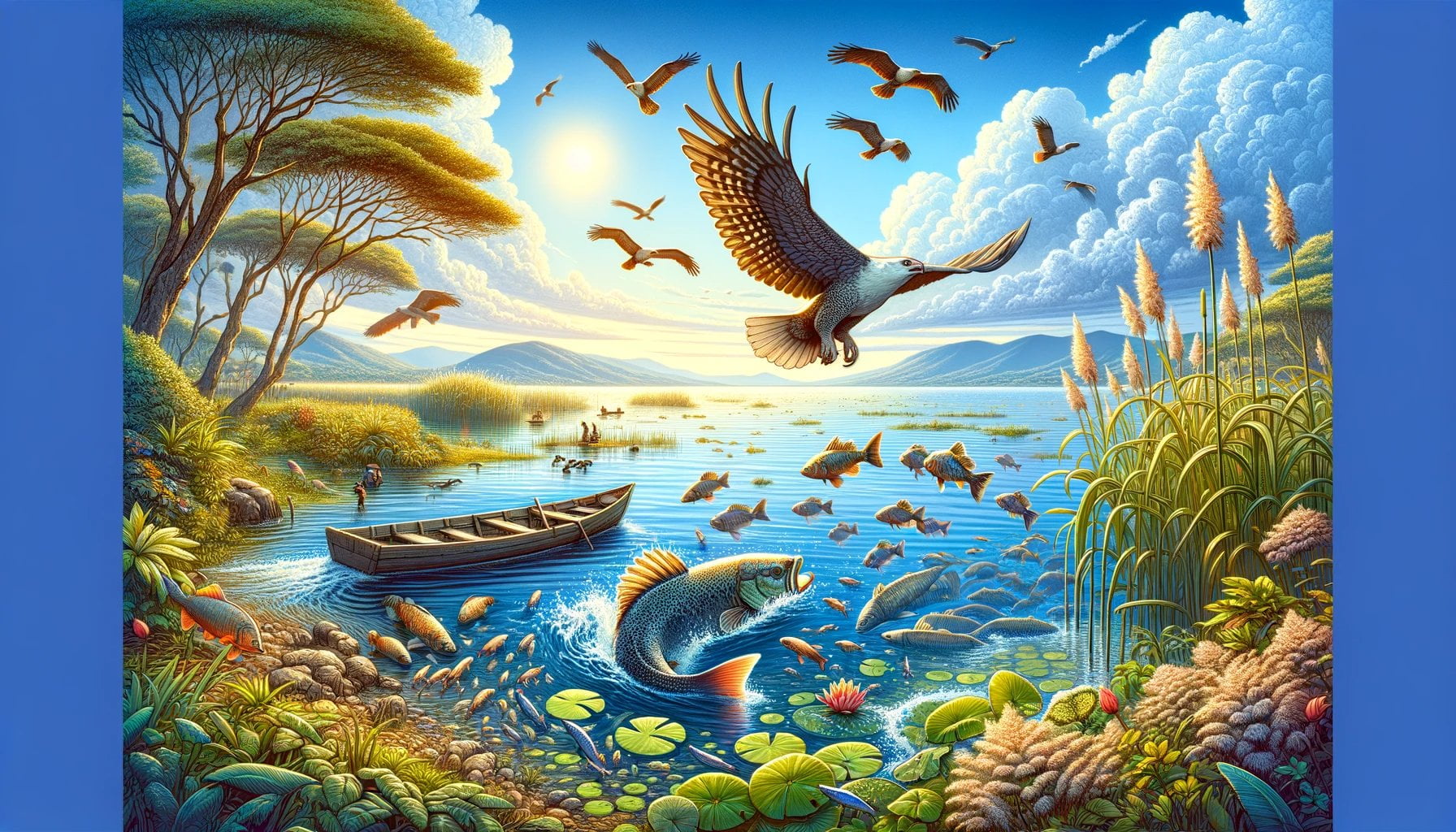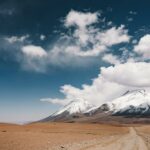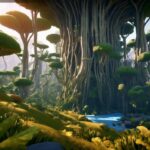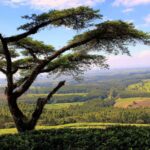If you’re seeking a delightful dive into the intriguing world of fun facts, look no further than Lake Victoria. This magnificent freshwater lake, nestled in the heart of East Africa, holds an abundance of captivating stories waiting to be unveiled. From its impressive size to its rich biodiversity and cultural significance, Lake Victoria offers a treasure trove of fascinating information for both nature enthusiasts and curious minds. Join us as we embark on a journey of discovery, delving into the captivating fun facts of Lake Victoria.
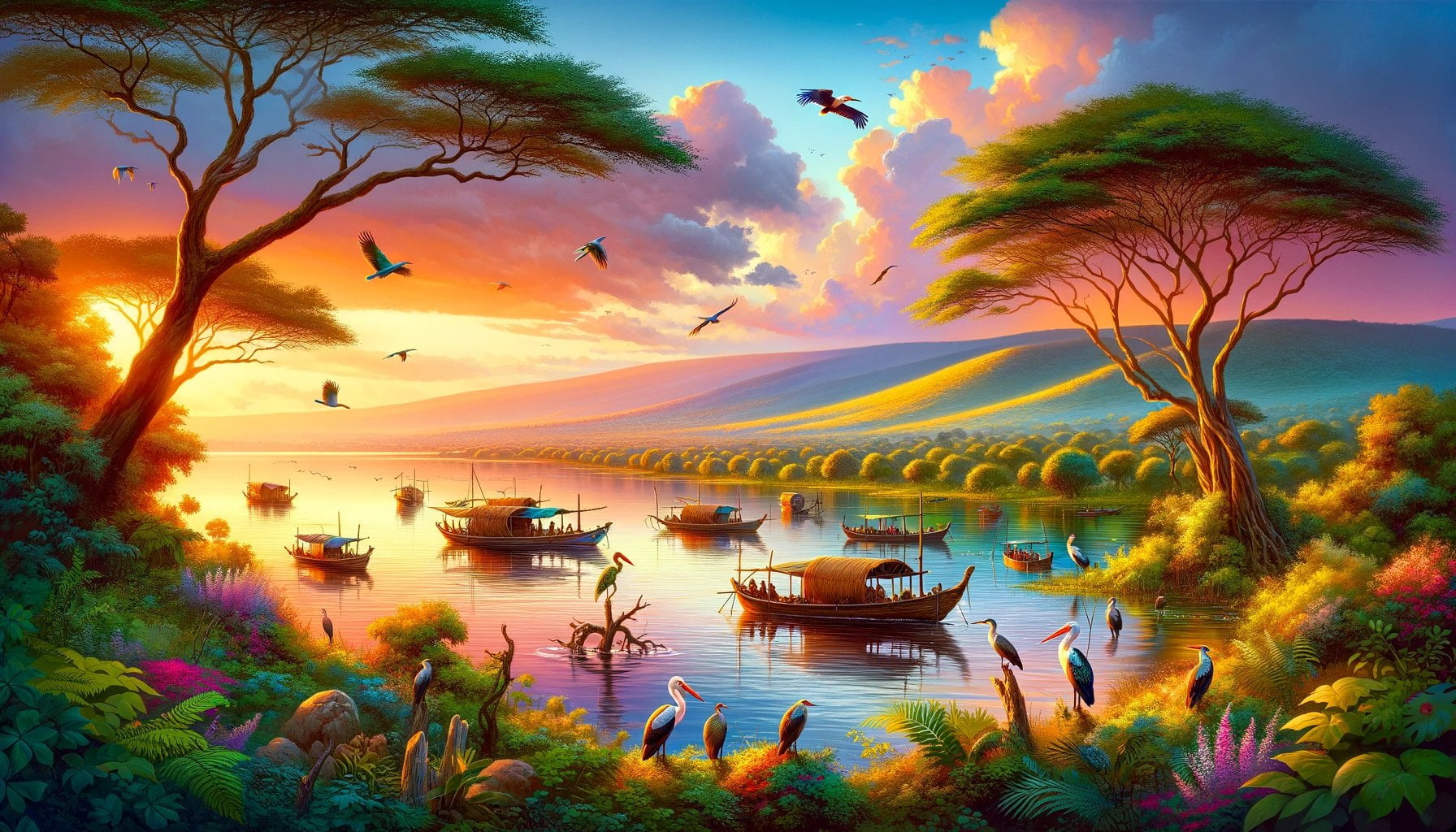
Key Takeaways:
- Lake Victoria is the largest tropical lake in the world and the second-largest freshwater lake by surface area, covering 26,600 square miles or 68,800 square kilometers.
- The lake was named after Queen Victoria of England by John Hanning Speke, the first European to see the lake in 1858.
- Lake Victoria has 3,440 km of coastline and over 3,000 islands, with the largest island being Ukerewe.
- Lake Victoria is divided among three countries: Kenya, Uganda, and Tanzania.
- The lake has two dams on the Victoria Nile that produce hydroelectricity.
- Lake Victoria is the world’s second-largest freshwater lake by surface area, about the size of Ireland.
- Lake Victoria’s shores stretch for 3,440 km.
- Lake Victoria is home to various species of flora and fauna.
- Despite its large size, Lake Victoria is not the deepest lake in the world.
- Lake Victoria has experienced significant changes throughout its geological history, including changes in water levels and the formation of smaller lakes.
Fun Facts about Lake Victoria
Lake Victoria, the largest tropical lake in the world, is a treasure trove of fascinating facts and enchanting stories. From its vast size to its rich history and unique ecosystem, this majestic lake never fails to captivate the imagination. So, let’s dive into the realm of Lake Victoria and uncover some intriguing fun facts!
1. A Tropical Wonder
Did you know that Lake Victoria is not only the largest tropical lake in the world but also the second-largest freshwater lake by surface area? Spanning an impressive 26,600 square miles (68,800 square kilometers), this magnificent body of water is second only to Lake Superior in North America. To put it into perspective, Lake Victoria is about the size of Ireland!
2. Royal Roots
Lake Victoria owes its name to a fascinating tale of exploration and royalty. The lake was named after Queen Victoria of England by John Hanning Speke, the intrepid explorer who became the first European to lay eyes on its shores in 1858. Speke’s discovery added a regal touch to this natural wonder, forever tying it to the history of the British Empire.
3. Island Paradise
With over 3,000 islands scattered across its shimmering waters, Lake Victoria is a paradise for those seeking secluded beauty. The largest island in the lake is Ukerewe, boasting captivating landscapes and vibrant local culture. From densely forested islands to sun-kissed sandy havens, these islands offer a glimpse into the untamed splendor of Lake Victoria.
4. A Three-Way Connection
Lake Victoria is not just a stunning natural wonder; it also plays a crucial role in connecting three East African countries. Situated at the border of Kenya, Uganda, and Tanzania, this magnificent lake serves as a vital resource and a shared heritage for these nations. Its serene waters are witness to a rich tapestry of cultures, making Lake Victoria a symbol of unity and interconnection.
5. Powering Progress
Apart from its breathtaking beauty, Lake Victoria also powers progress in the region. Two dams situated on the Victoria Nile tap into the lake’s vast hydroelectric potential, producing clean and renewable energy. This sustainable power generation contributes to the economic growth and development of the surrounding communities, showcasing the lake’s importance beyond its natural allure.
6. Biodiversity Hotspot
Lake Victoria is not just a tranquil expanse of water; it also harbors a diverse ecosystem bursting with life. Its rich biodiversity sustains numerous species of flora and fauna, many of which are unique to this region. From colorful cichlid fish to enchanting water lilies, the lake’s vibrant ecosystem is a constant source of wonder and exploration for scientists and nature enthusiasts alike.
7. An Ever-Changing Land
Throughout its geological history, Lake Victoria has experienced remarkable changes, shaping its present-day landscape. Fluctuations in water levels and the formation of smaller lakes have left their mark on this ancient body of water. The ever-changing nature of Lake Victoria adds a touch of dynamism and intrigue to its already fascinating story.
8. Depth is Relative
While Lake Victoria is awe-inspiring in its sheer size, it is not the deepest lake in the world. Despite its vast expanse, this tropical beauty falls short in the depth department compared to its counterparts. However, what it lacks in depth, it more than compensates for in its breadth, providing an expansive canvas for memorable adventures and exploration.
As we explore the wonders of Lake Victoria, we peel away the layers of its captivating story, unveiling a tapestry of natural beauty, cultural heritage, and life-sustaining resource. This tropical jewel remains a testament to the sheer magnificence and captivating allure of our planet’s breathtaking lakes. So, why not immerse yourself in the wonders of Lake Victoria and unlock its hidden treasures?
Here are some interesting fun facts about Madison Wisconsin! You won’t believe what you’ll discover about this charming city nestled in the heart of the Midwest. So go ahead, click here to unveil all the captivating tidbits about Madison.
If you’re intrigued by ancient civilizations and want to learn some fun facts about Athens Greece, click here to uncover the hidden wonders of this historic city. Explore its rich history, iconic landmarks, and timeless traditions.
Calling all Bear lovers! Want to know some interesting facts about UC Berkeley? Click here to dive into the vibrant world of this renowned university. Discover its fascinating campus, esteemed faculty, and academic excellence.
Lake Victoria: A Treasure Trove of Fun Facts
Imagine standing on the shores of a vast and majestic lake, surrounded by breathtaking scenery and immersed in the wonders of nature. Such is the experience one can expect at Lake Victoria, located in the western part of Africa’s Great Rift Valley. As a seasoned travel writer and outdoor enthusiast, I have had the privilege of exploring lakes and natural wonders around the world, and Lake Victoria has always held a special place in my heart. In this article, we will uncover fascinating fun facts about this remarkable body of water that will captivate and inspire you.
A True Giant on the African Continent
Lake Victoria holds the impressive title of being the largest lake in Africa and the second largest freshwater lake in the world. Named after Queen Victoria by the British explorer John Hanning Speke, this magnificent lake covers a staggering surface area of 26,600 square miles or 68,800 square kilometers[^1^].
Diverse Wildlife and Scenic Beauty
One cannot talk about Lake Victoria without marveling at its diverse wildlife and stunning landscape. The lake is home to more than 3,000 islets, each contributing to the area’s scenic beauty and creating a paradise for nature lovers[^2^]. With a shoreline measuring 3,440 kilometers, Lake Victoria offers endless opportunities for exploration and adventure[^3^].
Shared by Nations, United by Beauty
Stretching across three countries, Lake Victoria creates a sense of unity among Kenya, Uganda, and Tanzania. Kenya claims 6% of the lake’s territory, while Uganda and Tanzania hold 45% and 49%, respectively[^4^]. The shared ownership of Lake Victoria not only highlights the region’s geographical significance but also promotes cooperation and mutual understanding among these nations.
A Powerhouse of Energy
Lake Victoria not only captivates with its natural beauty but also plays a vital role in generating electricity. It powers progress through hydroelectric dams located on the Victoria Nile. These dams harness the strength and energy of the flowing water, bringing power and prosperity to the nearby regions[^5^].
A Rich Tapestry of History
Lake Victoria has a rich history, with its first recorded discovery made by Arab traders. Throughout its existence, the lake has witnessed changes in water levels and the formation of smaller lakes. Despite not being the deepest lake, it more than compensates with its vast expanse and the stories it holds within its depths[^6^].
Now that you have immersed yourself in the intriguing world of Lake Victoria, it’s time to reflect on the key takeaways:
Key Takeaways:
- Lake Victoria is the largest lake in Africa and the second largest freshwater lake worldwide.
- It is named after Queen Victoria and covers a surface area of 26,600 square miles or 68,800 square kilometers[^1^].
- The lake boasts a diverse ecosystem, housing over 3,000 enchanting islets and captivating wildlife[^2^].
- Shared among Kenya, Uganda, and Tanzania, Lake Victoria unites nations through its geographical majesty[^4^].
- Lake Victoria generates electricity, bringing power and progress to the surrounding regions[^5^].
- This remarkable body of water not only showcases the beauty of nature but also weaves a tapestry of history and transformation[^6^].
So, the next time you embark on an adventure or seek to learn about Africa’s hidden gems, remember to immerse yourself in the wonders of Lake Victoria. Its grandeur, rich history, and ecological significance will leave you in awe and inspire you to discover even more about this captivating continent.
Lake Victoria: Unveiling the Charms of Africa’s Great Rift Valley Gem
As you delve into the wonders of Africa’s Great Rift Valley, one majestic jewel stands out among the rest—Lake Victoria. With its vast expanse and fascinating history, this freshwater giant beckons travelers and nature enthusiasts alike. Join us on a journey to uncover the fun and intriguing facts that make Lake Victoria a true marvel of nature.
The Magnificent Lake
Lake Victoria, the largest tropical lake in the world and the second-largest freshwater lake by surface area, stretches across an astonishing 26,600 square miles (68,800 square kilometers). This enchanting waterbody, about the size of Ireland, was named after Queen Victoria by the renowned explorer John Hanning Speke.
A Tapestry of Islands
Prepare to be amazed as you navigate through Lake Victoria’s archipelago, consisting of over 3,000 mesmerizing islands. The largest among them, Ukerewe Island, captures the imagination with its rich cultural heritage and thriving fishing communities. Each island weaves its own unique story amidst the crystal-clear waters of the lake.
Uniting Nations
Lake Victoria forms a natural boundary, embracing the shores of three East African countries. Kenya, Uganda, and Tanzania share the privilege of being guardians to this remarkable resource. The lake’s waters foster unity and cooperation among nations, enriching their cultural tapestry.
Harnessing Power and Progress
Beyond its natural beauty, Lake Victoria plays a vital role in powering progress within the region. The magnificent Victoria Nile flows out of the lake, fueling hydroelectric dams that generate electricity. This energy source breathes life into surrounding communities, propelling economic growth and development.
Nature’s Abundance
Lake Victoria is a treasure trove of plant and animal life. Its diverse ecosystem supports a vast array of flora and fauna, making it a haven for nature enthusiasts. From vibrant aquatic plants to stunning bird species, the lake mesmerizes visitors with its enchanting biodiversity.
A Source of Life
As you gaze upon the tranquil waters of Lake Victoria, it is awe-inspiring to realize that this majestic lake is a major source of the mighty Nile River. The White Nile, one of the two main tributaries of the Nile, flows out of Lake Victoria, embarking on a grand journey that stretches across continents.
A Glimpse into History
Lake Victoria’s captivating history spans thousands of years, with its shores bearing witness to the rise and fall of civilizations. Locals and travelers have cherished this aquatic wonder throughout history. Its rich cultural significance and ancient roots intertwine with the present, creating an immersive tapestry of heritage.
Navigating Climate Changes
Lake Victoria has experienced significant changes in weather patterns and climate throughout its existence. Water levels have fluctuated, leading to the formation of smaller lakes within its vicinity. These transformations highlight the resilience of this natural wonder and its ability to adapt to the ever-changing forces of nature.
Timeless Beauty
Marvel at the ageless beauty of Lake Victoria, which has graced the Earth’s surface for approximately 400,000 years. Its tranquil waters and picturesque landscapes have inspired countless tales and ignited the curiosity of explorers across generations.
Key Takeaways:
- Lake Victoria is Africa’s largest lake and the second largest freshwater lake in the world.
- With a surface area spanning 26,600 square miles (68,800 square kilometers), the lake is approximately the size of Ireland.
- Named after Queen Victoria by John Hanning Speke, Lake Victoria showcases the captivating influence of historical figures.
- The lake’s archipelago encompasses over 3,000 islands, with Ukerewe Island being the largest and most culturally vibrant.
- Shared by Kenya, Uganda, and Tanzania, Lake Victoria fosters unity and cooperation among these nations.
- Generating electricity through hydroelectric dams on the Victoria Nile, the lake powers progress and sparks economic growth.
- Lake Victoria’s diverse ecosystem acts as a sanctuary for enchanting plant and animal life, captivating nature enthusiasts.
- The lake is a major source of the Nile River, with the White Nile flowing out and embarking on a grand journey across continents.
- Lake Victoria’s rich history is intertwined with the rise and fall of civilizations, immersing visitors in a tapestry of heritage.
- The lake’s timeless beauty, existing for approximately 400,000 years, continues to enchant and inspire explorers.
Sources:
1. kids.kiddle.co
2. tourismteacher.com
Lake Victoria: Uncovering Fascinating Fun Facts
Lake Victoria, the largest lake in Africa and the largest tropical lake in the world, is a truly remarkable body of water. Let’s dive into some captivating fun facts about this East African gem.
Lake Victoria, a Natural Wonder
- Did you know that Lake Victoria stretches approximately 359 km in length and 337 km in width? That’s quite an expansive body of water! It boasts an impressive shoreline that spans over 7,142 km, offering endless opportunities for exploration and adventure[^1^].
- With 985 picturesque islands scattered across its vast expanse, Lake Victoria is a paradise for island hopping enthusiasts. Some of these islands are even inhabited by local communities, each with their unique stories and traditions[^1^].
- Arab traders were the first to discover this magnificent lake, and they called it Ukerewe. Its rich history and cultural significance add another layer of intrigue to its charm and allure[^1^].
Life and Ecosystems in and Around Lake Victoria
- Lake Victoria supports a diverse and vibrant ecosystem. Its crystal-clear waters are home to a myriad of fascinating creatures, including hippos, otters, crocodiles, and turtles. Exploring the lake’s ecosystem offers a glimpse into the wonders of nature and the delicate balance of life[^1^].
- Unfortunately, indiscriminate fishing practices have taken a toll on the lake’s biodiversity. Many fish species have become extinct or endangered due to overfishing, posing a significant threat to the delicate ecosystem of Lake Victoria[^2^].
Lake Victoria: Powering Progress and Unity
- Lake Victoria serves as a valuable resource for the three bordering countries: Kenya, Uganda, and Tanzania. Hydroelectricity production from the lake’s waters plays a crucial role in generating power for these nations, contributing to progress and development in the region[^1^].
Key Takeaways:
- Lake Victoria is the largest lake in Africa and the largest tropical lake in the world.
- It stretches approximately 359 km in length and 337 km in width, with a shoreline spanning over 7,142 km.
- The lake is home to 985 islands, some of which are inhabited by local communities.
- Arab traders were the first to discover the lake and called it Ukerewe.
- Lake Victoria supports a diverse ecosystem with unique wildlife such as hippos, otters, crocodiles, and turtles.
- Overfishing has led to the extinction or endangerment of many fish species in the lake.
- Kenya, Uganda, and Tanzania utilize the lake for hydroelectricity production, promoting progress and development in the region.
For more detailed information about Lake Victoria and its significance, you can visit the following sources:
These sources will provide you with deeper insights into the incredible features of Lake Victoria and its significance in the African continent.
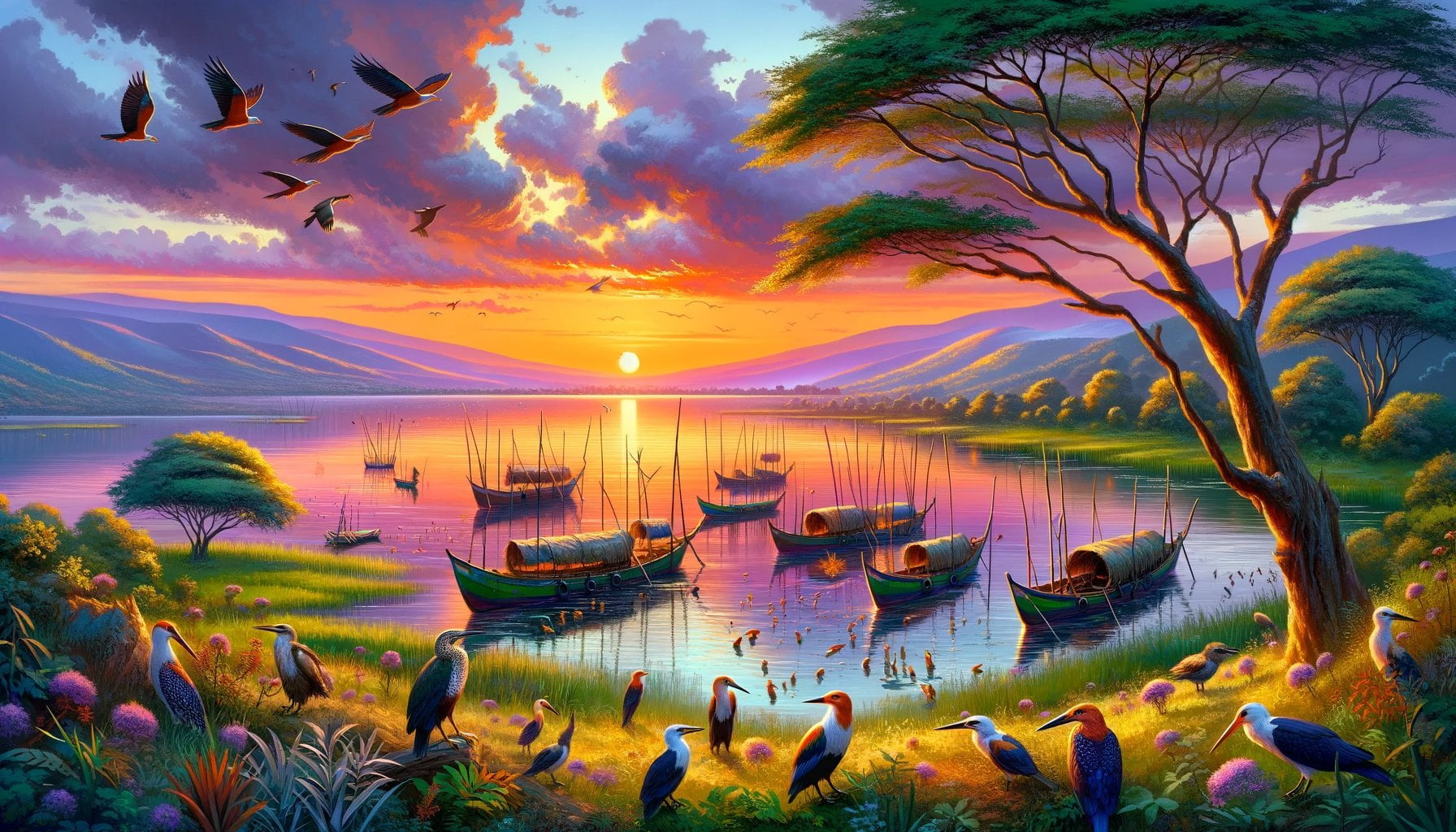
FAQ
Q1: What is the size of Lake Victoria?
A1: Lake Victoria covers a surface area of 26,600 square miles or 68,800 square kilometers, making it the largest tropical lake in the world.
Q2: How many islands are there in Lake Victoria?
A2: Lake Victoria is home to over 3,000 islands, with the largest one being Ukerewe.
Q3: Which countries share Lake Victoria?
A3: Lake Victoria is divided among three countries: Kenya (6%), Uganda (45%), and Tanzania (49%).
Q4: What is the historical significance of Lake Victoria?
A4: Lake Victoria has a rich history and has been known to locals and travelers for thousands of years. It was first discovered by Arab traders and named Ukerewe.
Q5: What is the ecological importance of Lake Victoria?
A5: Lake Victoria supports a diverse ecosystem and is known for its abundance of flora and fauna. However, it has also faced challenges with the extinction and endangerment of various fish species.
- Unveiling Bernhard Caesar Einstein’s Scientific Achievements: A Legacy in Engineering - July 15, 2025
- Uncover who is Jerry McSorley: CEO, Family Man, Business Success Story - July 15, 2025
- Discover Bernhard Caesar Einstein’s Scientific Contributions: Unveiling a Legacy Beyond Einstein - July 15, 2025
